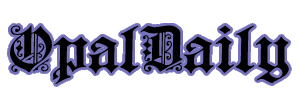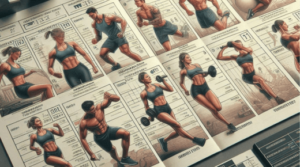Letter writing is an essential form of communication that has been in use for centuries. It allows individuals and businesses to convey messages, express thoughts, and communicate important information. Whether you’re writing a personal letter, a business correspondence, or a cover letter, understanding the proper format is crucial to ensure clarity and professionalism. In this article, we will explore the different aspects of letter mail format, including its purpose, structure, formatting guidelines, and various types of letter formats.
Letter Mail Format
Letter mail format refers to the standardized layout and structure used in writing letters. It provides a framework that enables clear communication and ensures that the intended message is conveyed effectively. Regardless of the type of letter, following a proper format is essential to create a professional and well-organized document.
Purpose of Letter Mail
The primary purpose of letter mail is to facilitate written communication between individuals, organizations, or institutions. Letters can serve a variety of purposes, such as:
- Conveying personal messages
- Formalizing business communications
- Applying for a job or internship
- Expressing gratitude or appreciation
- Requesting information or assistance
- Providing recommendations or endorsements
The format of a letter may vary depending on its purpose and the relationship between the sender and recipient.
Basic Structure of a Letter
To ensure consistency and clarity, a letter typically follows a basic structure that includes the following elements:
Heading
The heading appears at the top of the letter and includes the sender’s name, address, and contact information. It provides the recipient with the necessary details to identify and respond to the letter.
Date
The date indicates when the letter was written. It is usually placed below the heading or aligned with the right margin.
Recipient’s Address
The recipient’s address follows the date and includes the name, title (if applicable), organization, and address of the person or entity receiving the letter. It should be aligned with the left margin.
Salutation
The salutation is the greeting used to address the recipient. It is important to use the appropriate salutation based on the level of formality and familiarity with the recipient.
Body of the Letter
The body of the letter contains the main content and message. It should be organized into paragraphs with proper indentation. Each paragraph should focus on a specific point or idea and maintain a logical flow.
Closing
The closing is a brief phrase that signals the end of the letter. Common closings include “Sincerely,” “Regards,” or “Best regards.” It is followed by a comma.
Signature
The sender’s signature appears below the closing. If the letter is printed, a handwritten signature can be added after printing. In digital letters, a typed name suffices.
Tips for Writing an Effective Letter
When writing a letter, there are several tips to keep in mind to ensure its effectiveness and professionalism:
- Be Clear and Concise: Use simple language and get straight to the point. Avoid unnecessary details and ambiguity.
- Use Proper Grammar and Punctuation: Maintain correct grammar and punctuation throughout the letter to convey your message accurately.
- Maintain a Professional Tone: Adapt your writing style to the appropriate level of formality and professionalism based on the recipient and purpose of the letter.
- Address the Recipient Correctly: Use the appropriate title and name when addressing the recipient to show respect and acknowledgment.
- Include Relevant Details: Provide all the necessary information required for the recipient to understand and respond to the letter effectively.
- Proofread and Edit: Before sending the letter, thoroughly proofread it to eliminate any spelling or grammatical errors.
Different Types of Letter Formats
Letters can take various forms depending on their purpose and the relationship between the sender and recipient. Here are some common types of letter formats:
Business Letter
Business letters are formal communications exchanged between companies, organizations, or individuals in a professional context. They typically follow a specific format to maintain a standard of professionalism.
Personal Letter
Personal letters are informal communications sent between individuals to convey personal messages, share updates, or maintain personal connections.
Cover Letter
A cover letter accompanies a resume or job application and provides an opportunity for applicants to introduce themselves, highlight relevant skills and experiences, and express their interest in a particular job position.
Thank You Letter
Thank you letters are used to express gratitude and appreciation to individuals or organizations for their assistance, support, or gifts.
Recommendation Letter
A recommendation letter is a document written by someone who can attest to an individual’s qualifications, skills, or character. It is commonly used in academic and professional contexts.
Formatting Guidelines for Letter Mail
Proper formatting enhances the readability and professionalism of a letter. Consider the following formatting guidelines:
- Margins and Alignment: Maintain consistent margins on all sides of the letter and align the text flush left.
- Font and Font Size: Use a readable font such as Arial, Times New Roman, or Calibri, and choose an appropriate font size, usually 10 or 12 points.
- Spacing: Single space the content within each paragraph, and leave a blank line between paragraphs.
- Indentation: Indent the first line of each paragraph by half an inch to visually separate paragraphs.
- Use of Bullets and Numbering: Use bullet points or numbering to list items or present information in a clear and organized manner.
- Enclosures and Attachments: If there are any additional documents or attachments included with the letter, mention them at the end of the letter.
Mastering the art of letter mail format is essential for effective communication. Whether you’re writing a personal letter or a business correspondence, following the proper structure and formatting guidelines ensures clarity, professionalism, and the successful delivery of your message. By considering the purpose, recipient, and type of letter, you can create well-organized and engaging letters that leave a lasting impression.
You May Also Like:
- La 5 Letter Words
- L Letter Words
- L Letter Names for Girl Hindu
- Motivation Letter
- Motivation Letter for Job
- Motivation Letter Sample






